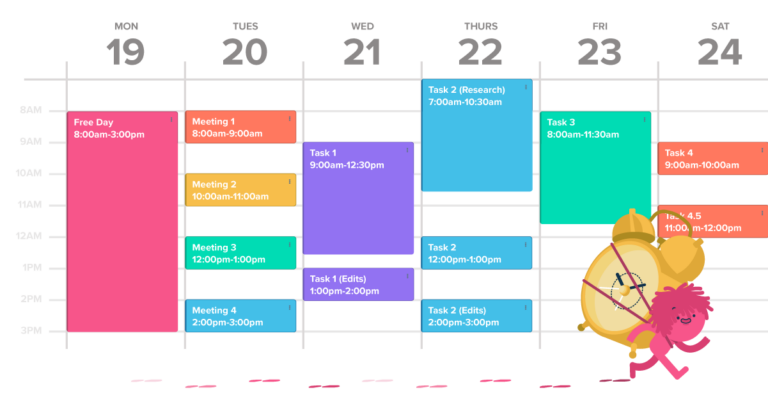This post may contain affiliate links. When you buy through links on our site, we may earn a small commission at no additional cost to you.
Analysing Literature – Another Crash Course
If you’ve ever gone to school, you’ve probably had your love for literature kicked out of you. That’s okay, me too, and look at me now, crying over my literature PhD (second draft) on the regular. That doesn’t sound too encouraging, but I’m happy to say that the crying part only comes with the doctoral degree. And it’s a loving kind of crying because you really want to do it well. Sadness aside, the thing with analysing literature and hating it often lies in it being taught so poorly that nobody ever wants to open a book again. Because, ya know, all those symbols and themes are scary.
Luckily for you, I’m here to guide you through a crash course on approaching any written work. I’ll preface it by reminding you of the most unoriginal question your teacher probably asked:
But what did the author want to say?
Although your teacher may not have heard about it, we haven’t asked this silly question since the 1950s. What the author wanted to say is their business, but what they said and how we understood it is ours.
Methods of Analysing Literature
Over its long history, literature has bedazzled many scholars who all assumed they had the right idea about how to analyse it. This gave rise to a series of ‘methods’ or what we call ‘literary criticisms’ (or even schools of thought). Here are the more common ones and some honest opinions on what’s wrong with them.
Biographical Criticism
This brand of nonsense is very popular but grossly misunderstood. It’s a moderately false assumption that you need to know the author’s biography when analysing literature. What people assume by this is that what some authors write is a reflection of their personality, psyche, troubles, and doubts. It is wrong to assume that everything a writer puts on paper is some sort of confessional self-therapy. Writers like Kurt Vonnegut, Chuck Palahniuk, and Paul Auster particularly made fun of it by writing questionable protagonists. Heaven forbid if we took them seriously.
On the other hand, it’s good to know some biographical details, as they can help us understand the broader context from which the author writes, even if it’s not that helpful in the analysis. For example, you won’t find the reason for Bukowski’s misogyny in his writings but in the fact that he grew up in an environment that perpetuates negative attitudes towards women.
Broad historical context is also related to authors’ biographies. For example, when Salman Rushdie writes about Saleem Sinai’s influence on the future of India, it bears knowing that he is referring to Indian independence and the following political turmoil that Saleem Sinai appropriates in his narrative. Similarly, when Achebe writes about African people trying to suck it up to the ‘settlers’, it’s good to recognise aspects of colonial history in Africa to analyse that context. In other words, get acquainted with the author, but don’t take everything they say for granted.
Genre and Period Approaches
As you know there are different literary eras – romanticism, Victorian, Edwardian, or Georgian literature, American transcendentalism, naturalism etc. Literary genres are even more numerous with realism, fantasy, science fiction, thriller, action and adventure, etc. Historical periods sometimes coincide with their genres – for example, romanticism refers both to a specific time when relevant works were written and the features of those works. For example, William Wordsworth and John Keats were more prone to celebrating Arcadian freedom, high morals, and ideals in the face of industrial revolution and urban sprawl than someone writing science fiction in the twentieth century.
New Historicism
Popularised by Stephen Greenblatt, who still loves giving lectures about Shakespeare, this brand of criticism reads history from literary works. Greenblatt’s idea is that at the margins of every literary work, one finds valuable historical information about the period in which this piece can be analysed in that historical context (e.g. warring Italian families in Romeo and Juliet). Moreover, you can find out more about the historical context from textual cues (e.g. what kinds of balls they threw in the time when Shakespeare writes).
To analyse literature in this way, you should look for texts the readers of your particular book (e.g. Macbeth) had access to at the time Macbeth was published. These texts should help you understand cultural, social, and political relations that governed the creation of the book you’re analysing. New Historicism is particularly focused on Shakespearean writings and Renaissance theatre.
Post-Structuralism
As its name suggests, post-structuralism rejects the notion that literature can be understood via a strict set of structures and rules. God bless post-structuralists, they had a good idea. However, this approach can only be successfully used on literature written from the twentieth century onwards because writers tended to steal certain leitmotifs from one another before that.
Firstly, post-structuralist analysis denies the replicability of symbolisms – if the curtain is blue in Tolstoy’s novels, it may well mean something different in Adichie’s. It’s the context that decides the meaning rather than the other way around.
Another key aspect of post-structuralism is that language is not transparent in its relations to concepts, and it can be used to hide, deceive, and mislead, which is what these fine people very often did. Theirs is the view that what the author had wanted to say is not particularly important as the linguistic filtering may change the meaning – which is why we care more about what the author said to us specifically. Each reader brings their own experience of the world, previous readings, and personal bias into a text, reading it in a personal way.
Feminist and Queer Criticism
The twentieth century caused literary criticism to branch out into various social, political, and cultural directions. Feminist readings (and queer criticism that came out of them) focus on women’s writing, representation of women in literature, and the overall relation to cultural dominance of (white) male writing, patriarchy, and similar systems of oppression. For a light introduction to feminist criticism, I suggest a fictional book: Girl, Woman, Other by Bernardine Evaristo.

More Practical Tips on Analysing Literature through a Critical Lens
Knowing about various criticisms is all fine and well, but what do you do with them? When you approach a piece of literature from a clinically clean literary perspective, your analysis will greatly rely on the specific theory you’re applying.
For example, if you’re working with a realist novel by Gogol, you should be familiar with what realism means in literature, what kinds of characters you can expect to encounter, and whether characters are (arche)types and symbolic tokens of values and ideas or just representations of everyday people of the age. Similarly, if you’re keen on analysing Fight Club, you should know what postmodern literature is, how it treats language, consciousness, and morals, how it relates to the critique of capitalism, and how all of this is shown in the novel (and later film). When Tyler Durden goes on his tirades about big corporations, it’s as much criticism of consumerism as is the Narrator’s mindless leafing through shopping catalogues.
The reason I call this clinical is that, for the most part, the best literary analyses also take the cultural moment into consideration. To achieve this, it’s best to combine at least one literary approach with another socio-cultural, such as feminist critique, queer studies, postmodernism (especially around capitalism and consumerism), postcolonial literature (which is inherently political), etc. This is what we unprofessionally call distant reading.
Analysing Literature – Close Reading
To take this philosophical discussion down a notch, there are aspects of literature that you can analyse without going too much into the complexities of literary criticism (that’s for people studying literature at university). Zooming into the text and its basic characteristics is colloquially called close reading.
Analysing Characters in Literature
Let’s start with characters. Every book has them (and if not, there’s probably a reason for that, although these books are extremely rare and experimental), they make decisions, they cause chaos – what do we make of that?
Ask these questions for character analysis:
- What’s their personality like?
- How are they described by the author and by other characters – what do these descriptions tell us about the character in question and those describing them?
- How do their surroundings affect them?
- How are they similar or different from other characters, and what does this difference mean?
- What are their main character traits, and when do we see them best?
- How do their decisions impact the course of action/plot?
- What development can you follow through the book?
- What lessons has the character learnt, and what can readers take from that?
When analysing characters, don’t just describe – interpret! What does it mean that the character is motivated by their greed? Is it social critique? Is it related to a particular time? What caused this, and what are the results of their actions?
Example: Let’s take Elizabeth from Pride and Prejudice. She is curious, loves to read, definitely doesn’t have a problem with speaking her mind? Why? Well, she is the reflection and criticism of the society she grew up in – the one where women are meant to be seen, not heard. When she makes herself heard, she changes the world around her. Her youngest sisters, on the other hand, are rather shallow not just because it makes you cringe to read about them, but because Jane Austen is writing in mocking disapproval about the expectations society had of women – and the consequences thereof. (PS, this is where a bit of that new historicism approach comes in handy.)
‘No Theme is Inept, no Past or Present Preferable’: Analysing Theme in Literature
Each piece of work is centred on specific themes – there’s hardly a book that can cover everything ever invented. Although, if James Joyce had lived longer, there would probably be one. How do you analyse themes?
- Consider the whole book. To locate specific themes, you have to read the book first – unlike characters where each situation brings something new, themes are only fully visible after reading the whole thing. Write down pivotal situations, dialogues, discussions to see what connects them.
- Call back on character analysis. What do main characters have in common? Are they worried about relationships, work, the world at large? You’ll find lots of themes in the characters’ minds, often relating to love, success, morals, ideals, and envisioning of a better life for them.
- What is the author obsessed with? Every author has a theme they like to go back to, either through key events and descriptions or separate discussions.
Example: The Handmaid’s Tale is a criticism of a totalitarian regime, which is shown through the torture handmaids go through and the flashback scenes of how the Gilead government was created. When June (let’s call her that after the show) describes the pictures on shop doors, it’s a reflection of the fact that women are not allowed to read in Gilead. Control of knowledge in Atwood’s dystopia equals loss of freedoms and human rights, as well as the indoctrination women are subjected to especially since they have no access to ways of fighting oppression and totalitarianism. As you can see, this analysis, again, uses feminist theory to tie it together.
‘It Speaks! What does it say?:’ Analysing Language in Literature
Language can influence your analysis, especially in situations where you feel like something is off. The off sensation is called estrangement, and it’s meant to make you feel displaced in your reading experience in order to pay more attention to these specific instances. The way the book is written can be an indicator on how to analyse it.
Check this out:

The way this is written implies a late-romanticist novel. The year 1867 doesn’t help that impression but guess what! The novel is actually The French Lieutenant’s Woman, and it was published in 1969. What the author, John Fowles, does is a stylistic appropriation called pastiche. He writes in the style of romanticist novelists to give you a false sense you’re in that period, which will later be disrupted (spoilers) by metafictional intrusions that will reveal more about the actual genre, i.e. postmodernism.
While talking about language, the way characters speak is also an interesting aspect to look at. Do they enrich their dialogue with flourishes, hedges, and epithets, or are they more likely to speak in curt, straightforward fashion? How about their grammar? Does this relate to their character?
Heteroglossia is the term used to refer to a multiplicity of voices in literature. In other words, characters have their own ways of speaking, frequent clutch words, phrases, etc. Not only is this a quality of great literature, but it’s also revealing about characters themselves.
Example: Huckleberry Finn is basically illiterate, which is obvious from the moment he opens his mouth. However, when he saves a Black man from certain slavery and even death, Huck starts to wonder where racism comes from and whether it’s right to hate people based on their skin colour (mind you, he lives in the pro-slavery South). What’s interesting is that a good deal of racism towards Black people is based on the outrageous presumption they are inferior to whites, and yet, Huck is the one who cannot read, let alone something else. Still, despite his lack of knowledge, he possesses the quality of spirit and the strong sense of justice that guides his actions. You go Huck!
But Why is the Curtain Blue??? A Word on Analysing Symbols in Literature
The problem with symbols is that they can be anything, and they can mean a ton of different things. Anna Karenina’s dress at the ball may mean one thing in that novel, but some other character wearing it in another book will mean a totally different thing. There are no shortcuts to analysing symbols except for knowing that they never mean what they represent on the surface level.
To make your quest easier, you can look out for surprisingly long descriptions of certain items, characters’ favourite accessories or toys, or simply repetitive things. All of them can carry a meaning you can only interpret within a given context.
Example: The green light in The Great Gatsby is an odd thing to be staring at every night. Due to its repetition, it’s clear that it’s a symbol, and once you’ve read the novel, you’ll be able to gauge the relation between the green light and Gatsby’s desire for what he cannot have. Always distant, always glowing – kinda like the grass, which is always greener on the other side.

Analysing Literature – Does it Have to be That Hard?
While it may seem laborious to think about all these things when analysing literature, once you get into the swing of looking at books through specific critical lenses, it’ll become second nature. The most important thing is to be able to support your interpretation with good arguments (examples from the text, literary theories, and genre conventions).
To write a good literature essay, you can also follow a simple structure:
- Summarise the plot briefly.
- Analyse characters – both how they behave and how they speak.
- Analyse themes.
- See if there are specific symbols connecting themes and characters.
- Add a cultural context to your work.
If you’re writing a university term paper, we’ve got you covered here! 😉







